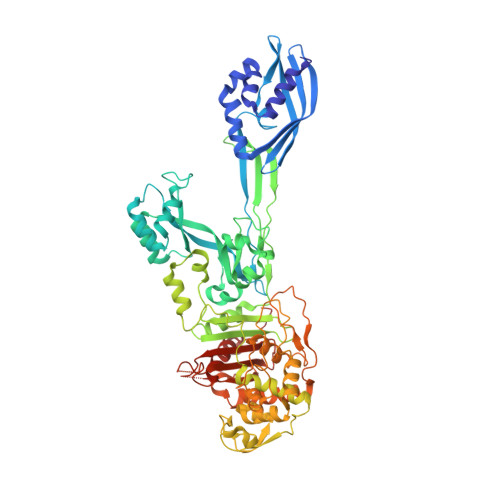Structural Insights into the Anti-methicillin-resistant Staphylococcus aureus (MRSA) Activity of Ceftobiprole.
Lovering, A.L., Gretes, M.C., Safadi, S.S., Danel, F., de Castro, L., Page, M.G., Strynadka, N.C.(2012) J Biological Chem 287: 32096-32102
- PubMed: 22815485
- DOI: https://doi.org/10.1074/jbc.M112.355644
- Primary Citation of Related Structures:
4DKI - PubMed Abstract:
Methicillin-resistant Staphylococcus aureus (MRSA) is an antibiotic-resistant strain of S. aureus afflicting hospitals and communities worldwide. Of greatest concern is its development of resistance to current last-line-of-defense antibiotics; new therapeutics are urgently needed to combat this pathogen. Ceftobiprole is a recently developed, latest generation cephalosporin and has been the first to show activity against MRSA by inhibiting essential peptidoglycan transpeptidases, including the β-lactam resistance determinant PBP2a, from MRSA. Here we present the structure of the complex of ceftobiprole bound to PBP2a. This structure provides the first look at the molecular details of an effective β-lactam-resistant PBP interaction, leading to new insights into the mechanism of ceftobiprole efficacy against MRSA.
- Department of Biochemistry and Molecular Biology and the Center for Blood Research, University of British Columbia, Vancouver, British Columbia, Canada.
Organizational Affiliation:




















